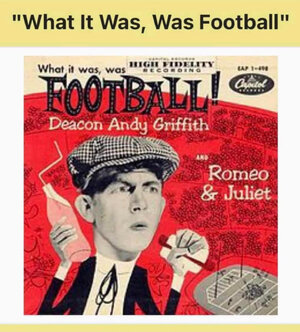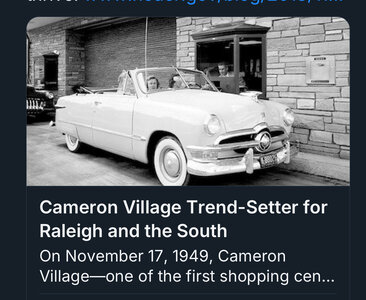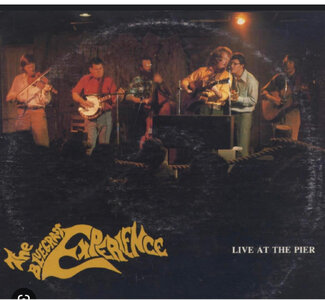donbosco
Inconceivable Member
- Messages
- 3,213

#OTD (November 14) in 1953, Chapel Hill’s Colonial recording label released Andy Griffith’s monologue “What It Was, Was Football.” ‘Chapel Hill Newspaper’ publisher, and owner of Colonial, Orville B. Campbell, had heard #UNC graduate Griffith (Class of 1949) perform the bit earlier that year. This was the kick-off, if you will, of a long career as a singer, dramatic actor, and comedian for Griffith. For good or ill (Me? Mainly Good) he and his stylings are deeply associated with the character of the state of North Carolina.
From the troubling portrayal of the potential of Southern populism in ‘A Face in the Crowd’ to the pragmatism of country wisdom in ‘The Andy Griffith Show,’ with stops like ‘No Time For Sargents’ and ‘Matlock,’ along the way, the Mount Airy Tar Heel etched his voice into our collective psyche as much as such a thing can exist In These Times.
Here’s where I may ruffle a feather or two — sadly, and as my Momma was so fond of saying, “and I mean that thang” — football is today presenting a pretty strong challenge to the truly beautiful game in North Carolina. To be sure, once upon a time the inimitable ‘Choo Choo’ Justice drew the attention of the nation to Chapel Hill and Wallace Wade’s time in Durham was widely heralded — but that was a bygone era before we North Carolinians had come under the spell of Hard Court Houdinis like Frank McGuire, Everett Case, and Dean Smith and been treated to the graceful homegrown artistry of Lou Hudson, Pete Maravich, David Thompson, Bobby Jones, Chris Paul, Phil Ford, Walter Davis, and Michael Jordan - to name only a very few. I could go on and on. I could name Walt Bellamy, Sam Jones, James Worthy, Stephen Curry, Coby White, Meadowlark Lemon, Rusty Clark, and Curly Neal for example.
There is an irony to the popularity of “What It Was Was Football” in my eyes because the truth is that the true ground zero for our statewide psyche belongs on the basketball court not the gridiron. I will always think of football as something to pass away the early days of Autumn until basketball season begins.
Unfortunately, I’ve noticed times have changed some of late, and not for the better in my estimate, and that both college and pro football now appear to rival the truly beautiful game of basketball for primacy in The Olde North State. A few years ago I taught a course titled “Southern Culture on The Skids?: Sports, Food, and Music in North Carolina.” (Apologies to Mary Huff and Dave Hartman) My vision was of a semester dedicated to barbecue, blues and bluegrass (with some ‘alternative’ sounds thrown in for good measure), and a longish consideration of basketball for the semester’s home stretch. And in the main we managed that schedule but I did have to put up with the rude intrusion, student-led even, of a focus on the Carolina Panthers of the National Football League. I probably could have much more graciously accepted a call for greater acknowledgment of the state’s Diamond heritage and the likes of Catfish Hunter, Gaylord and Jim Perry, Brian Roberts, or even Josh Hamilton. But Professional Football? Say it ain’t so Joe.
It is in fact comforting to me that once a fresh-out-of-college Andy Griffith might lampoon a North Carolinian’s ignorance of football. Frankly, I could live with a right smart more of that kind of inexperience with the gridiron and a return to the enthusiasm once so much healthier as expressed on the hard court. It’s not that I can’t enjoy the carnival atmosphere of a brisk and leafy Fall Saturday afternoon in a stadium with 40,000+ compatriots. Taking an ACC Coastal Division Title can do a fan good to be sure. It’s just that I prefer that our hearts be properly dedicated first and foremost to a sport that is more akin to art than it is to warfare.
This is what I believe.
Listen here to Griffith’s telling:


